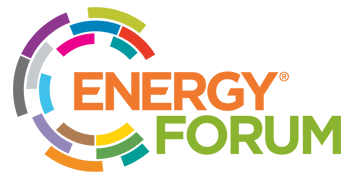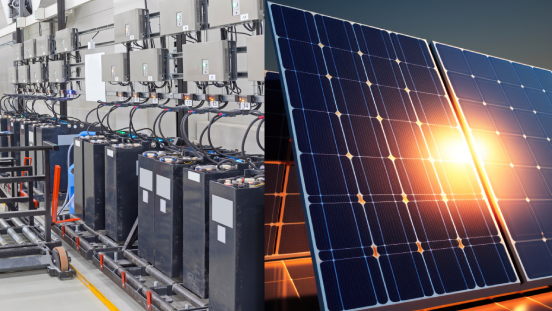Key Highlights
- Most of the increase in worldwide electricity supply from 28.7% in 2021 to 43% in 2030 is projected from wind and photovoltaic technologies, according to yearly IEA statistics.
- Several solar PV projects are underway. Solar PV efforts include Natural Power's solar site takeover.
- Prescott Hartshorne of National Grid Ventures stresses the importance of energy storage in the renewables transition since it enhances operational efficiency and reliability.
- Tesla's 100 MW/129 MWh Li-ion battery storage project at Hornsdale Wind Farm in Australia is one of the largest. In the New York State high-level demonstration project using the 4MW/40MWh battery storage system, the operator saved USD 2.03 million in fuel costs and over 400 hours of power grid congestion.
- Vattenfall constructed a 20MW, 2-hour BESS near Otterburn's 16-turbine Ray Wind Farm.
Renewable energy is not only clean but also cost-effective. Unlike fossil fuels, they do not release harmful pollutants or greenhouse gases, come in a wider variety of forms, and are used on a worldwide scale. Unlike volatile fossil fuels, their depletion is sustainable.
With this, the world is starting to revolutionise energy. Statistics published annually by the International Energy Agency (IEA) show that the global electricity supply is expected to increase from 28.7% in 2021 to 43% in 2030, with wind and photovoltaic (PV) technologies accounting for most of this increase in demand. They also predicted that by 2040, global demand for electricity would have increased by 70 percent, rising from 18 percent to 24 percent of total energy consumption. Developing economies in places like India, China, Africa, the Middle East, and Southeast Asia will be largely responsible for this growth.
The Solar Photovoltaic (PV) Technology
Photovoltaic (PV) materials are used to convert sunlight into electrical energy. To maximise energy output, PV cells are combined into modules or panels. Modules can be combined into arrays or used singly. Integral PV systems link multiple arrays together and into the utility network. Because of their adaptable design, PV systems can meet the electrical power requirements of virtually any size business or household.
When used as a renewable energy source, solar photovoltaic panels are good for the environment because they produce no greenhouse gases. Other than that, benefits of solar PVs also include:
• Lower energy bills
• Don’t distract or intrude on people, as it is quiet, unlike traditional generators
• Require little maintenance
• Can be configured
There are different solar PV projects that are ongoing. One example of this solar PV initiative is Natural Power’s taking over on a solar site. In Essex, England, Ockenden Solar PV Park, which is 40MW in size and was previously designed by NTR, has seen Natural Power take up the role of owner's engineer and lead designer. With over 108,000 ground-mounted PV panels, the solar park on the 98.44-hectare Veolia-owned land could power 17,000 local households.
As per Natural Power construction director Ralph Spernagel, “This has been a really exciting project for us, not just due to the location of the site in close proximity to London, where there is understandably a significant demand for energy, but also the forward-thinking nature of the development that is repurposing land that would otherwise go unused to supply clean power using new and innovative engineering solutions that ensure minimum disruption to the landfill and maximum energy output.”
As advancements continue to make solar panels more efficient and cost-effective, the potential for solar PV to revolutionise our energy landscape is only growing.
Embrace a Sustainable Future at All-Energy & Dcarbonise 2024
Discover the latest advancements in renewable energy sources and innovative solutions that will pave the path to a greener and net zero future.
Battery Storage: Supporting the shift to low carbon technology
Battery storage, also known as battery energy storage systems (BESS), makes it possible to store and release renewable energy sources like solar and wind at times of peak demand. Effective energy storage is particularly important in places like the United Kingdom, which have a lot of potential for harnessing renewable energy sources to power homes and businesses. The shift to low-carbon technology across sectors is supported by battery storage systems, which the UK government expects to result in significant savings and lower energy bills. National Grid Ventures' Prescott Hartshorne stresses the need for energy storage in the ongoing shift to renewables, as it improves operational efficiency and dependability.
Like in solar PV, there have been tonnes of battery storage initiatives. Tesla's 100 MW/129 MWh Li-ion battery storage project at Australia's Hornsdale Wind Farm is one of the largest such systems currently in operation. The New York State high-level demonstration project employing the 4MW/40MWh battery storage system revealed that the operator could save up to USD 2.03 million in fuel expenses and minimise almost 400 hours of congestion in the power grid.
Another example is the 20MW, 2-hour BESS installed by Vattenfall close to the 16-turbine Ray Wind Farm in Otterburn, England. It is hoped that Battery@Ray will aid in maintaining a reliable power system by improving the efficiency with which electricity supply and demand are balanced. Since more renewable energy can be produced and stored at home, this improves the reliability of our energy supply as well.
With ongoing innovation and widespread adoption, battery storage holds the key to a cleaner, more efficient, and sustainable energy landscape.
It’s time to Embrace Solar PV and Batteries for a Brighter Tomorrow
Solar PV shines as an example of a clean energy technology that may be used to power our lives while minimising our impact on the environment. When paired with modern battery technology, this dynamic pair can keep the lights on long after the sun has set. Using PV and batteries helps us become less dependent on the power grid and has positive effects on the environment.
The sun and the power of batteries are the keys to a better, cleaner, and more affluent future for all of us, and we should embrace them fully as we stand on the brink of a green energy revolution.

